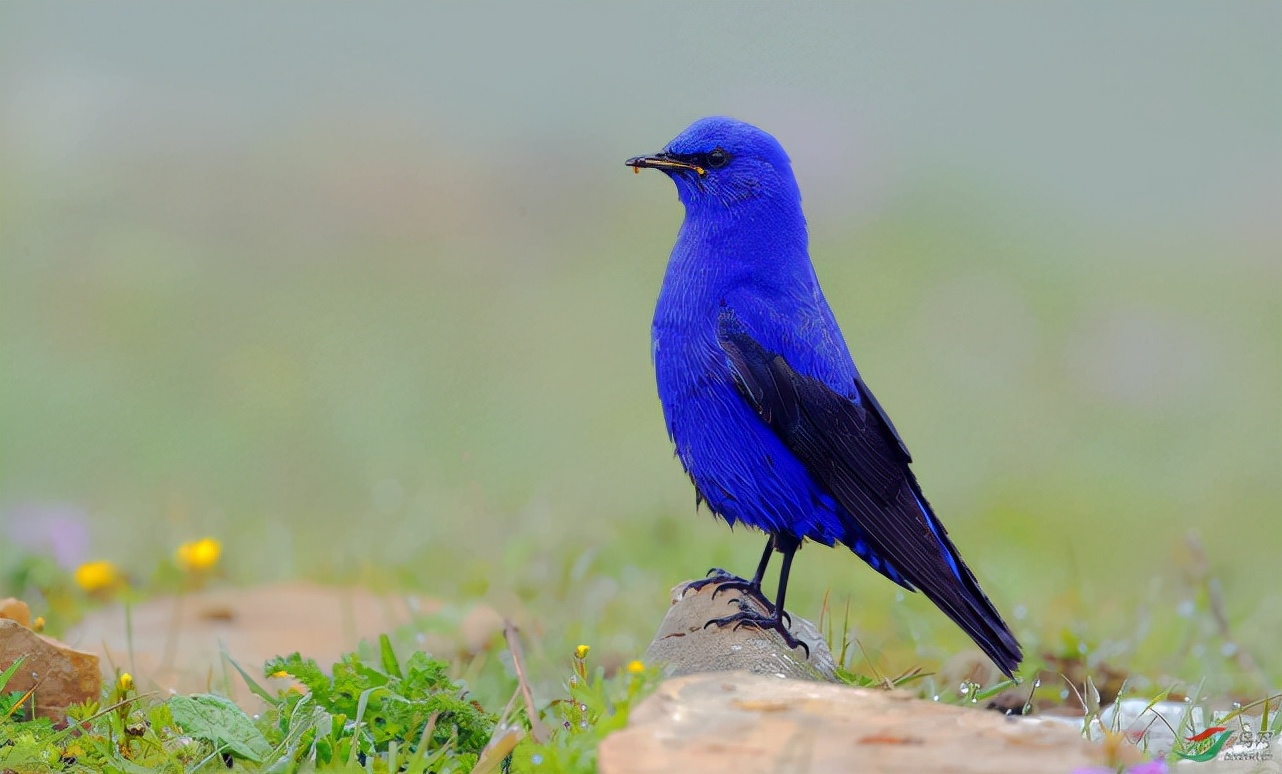In Barang Mountain, the first star bird is of course the green-tailed rainbow pheasant, and the next second largest star bird may be the protagonist we are going to talk about today - the blue-winged plover, mainly because its beautiful appearance has conquered the audience.

The Great Blue-winged Plover is a medium-sized ( 21 cm ) bird that belongs to the genus Great-winged Plover in the family Passeriformes. The male has a metallic luster throughout the body, with black wings and tail, and a slightly forked tail. Females have greyish brown upperparts with brownish-white longitudinal stripes on their heads and dorsals; grey-brown lower bodies, brownish-white longitudinal stripes on their throats and thoraxes; and white wing spots on their wings. Similar to its kind, the male blue-winged plover has brilliant blue feathers, while the female blue-winged plover has light gray plumage.
When winter comes, flocks of large blue-winged plovers land on the trees in groups, which is a magnificent sight.
The blue-winged Plover is an alpine bird that migrates vertically, inhabiting alpine forest shrublands and rocky plateau meadows at altitudes of 3500-5500 m in summer, and in winter it moves down to coniferous and mixed coniferous and broad-leaved forests and their forest margins below 3000 m to about 1400 m. In addition to the breeding period of paired activities, other seasons are more flocks, especially in winter foraging often in large groups.
It is mainly distributed in Bhutan, China, India, Myanmar and Nepal. It is a rare or regionally common resident bird in China, found in southern and southeastern Tibet, northwestern Yunnan, eastern Qinghai, western Gansu, and western Sichuan.
It is found in alpine meadows above shrublands and bare rock summits, on rain-prone ridges and high places. Sometimes birds of the same sex form small to large flocks. It flies and postures like the grebe, but also resembles the purple-winged starling and flies in large flocks. In winter, flocks inhabit trees. Rare or regionally common resident birds are found in the mountains of southern and southeastern Tibet, northwestern Yunnan, eastern Qinghai, western Gansu, and western Sichuan. It is a vertically migratory bird, which is 3400 to 5400 meters above sea level in summer but down to 2000 to 4300 meters in winter.
It feeds mainly on insects, especially during breeding. It also eats plant fruits and seeds during the non-breeding period.
Reprint Statement:
Part of the content of this article is reproduced from the Internet, for the reader's reference only, and the copyright belongs to the original author. We share this article for the purpose of disseminating more information. If there is infringement, please leave a message to contact us to delete, thank you!